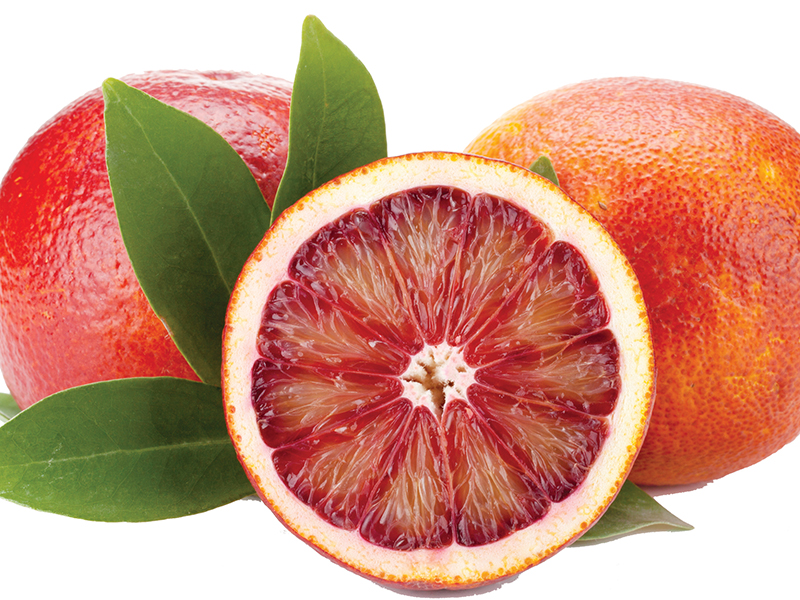Despite its gory name, blood oranges are beautifully sweet with a noticeable raspberry note. Best of all, it’s something to look forward to during the colder months from December to April.
Origins
Blood oranges originate from the Mediterranean where the unique climate develops an antioxidant in the fruit called anthocyanin. It’s what gives the orange its deep red color. In the United States, blood oranges are cultivated in California.
Nutritional Value
As you can imagine, blood oranges are rich in vitamin C containing up to 40 percent more than navels and other oranges. Your body needs vitamin C for a number of metabolic functions. Two blood oranges are more than enough to comply with the recommended daily intake of vitamin C.
Blood oranges also contain folic acid, which helps forms red blood cells and prevents birth defects, something pregnant women are told to consume by their obstetricians. Remember those anthocyanins? Nutrition experts believe that anthocyanins have anti-inflammatory properties that affect collagen, are good for preventing cancer, diabetes and bacterial infections, and for reducing the risk of heart disease. Blood oranges also contain calcium and vitamin A. These keep the skin healthy and promote regular development of skeletal tissue and teeth.
Varieties
There are a number of blood oranges like the coveted Sicilian red orange which is grown only in Sicily. Another is the deeply colored, and almost seedless Moro. They are sweet and tart. There is also the quite sweet and easy-to-peel Tarocco and the Sanguinello, a sweet orange with red streaks. Other varieties include Washington, Burris, Sanguina Doble Fina, Delfino, Khanpur, Red Valencia, Ruby Blood, Sanguine and Vaccaro—each with its own unique qualities.
Blood oranges are used from zest to flesh, cooked to uncooked, in both sweet and savory dishes. Delicious in cocktails, marinades and syrups, it pairs well with mint, rosemary and oregano, as well as seafood and duck. Blood oranges compliment soft cheeses, like brie, very well, along with yogurt, and even shallots—because of its delicate flavor.
Blood Orange Salad
Vinaigrette:
- 4 cups fresh blood orange juice
- 1 tablespoon of finely diced shallots
- 2 tablespoons Sherry vinegar
- 1 tablespoon Dijon mustard
- 2 teaspoons honey
- 3/4 cup extra virgin olive oil
- Kosher salt and ground black pepper to taste
Salad:
- 2 tablespoons of extra virgin olive oil
- 1 cup oyster mushrooms
- 3 cups of arugula leaves or spinach
- 2 cups of dandelion leaves
- 1/4 cup of thinly sliced red onion
- 1 sliced blood orange
*Add 1/8 cup of cottage cheese for some texture and protein
Make it:
- Saute mushrooms in extra virgin olive oil. Season with salt and pepper. Then remove from heat.
- In a bowl, season arugula and dandelion leaves with salt and pepper. Toss blood oranges, onion and mushrooms in vinaigrette.
NOTE: Amp up this salad by topping it with duck confit, which is a phenomenal pairing with blood oranges.
TIP: As when choosing any citrus fruit, look for blood oranges that feel heavy for their size.


